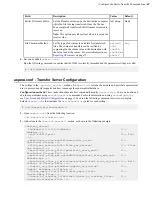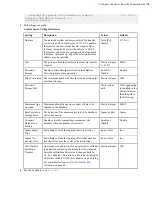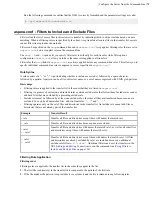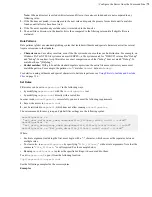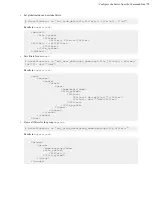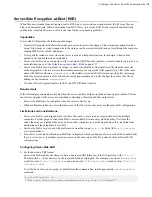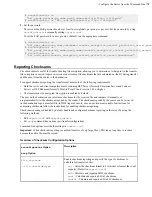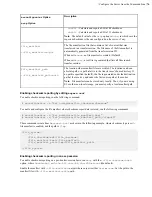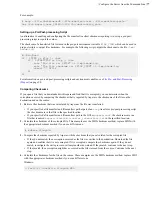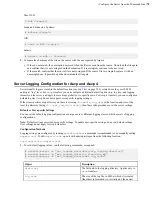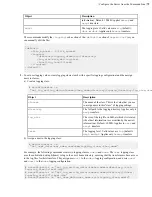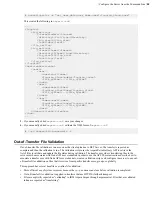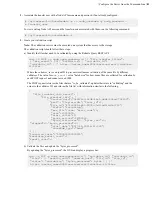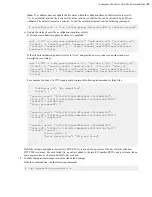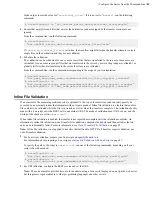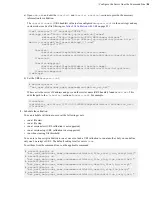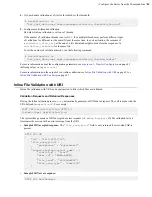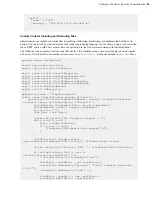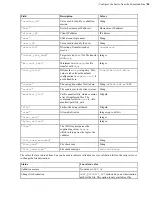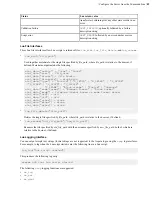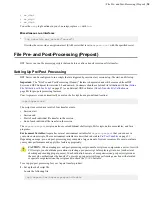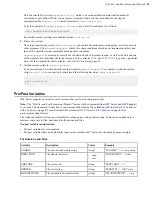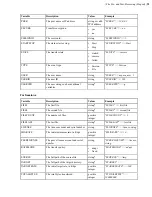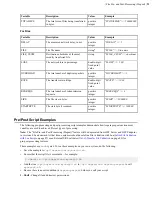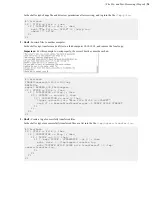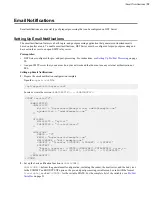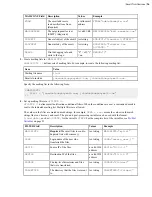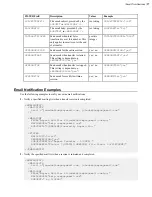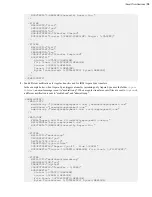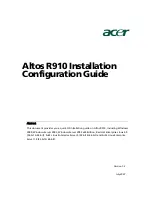
| Configure the Server from the Command Line |
83
In the output, locate the value for
"persistent_store"
. If it is not set to
"enable"
, run the following
command:
# asconfigurator -x "set_central_server_data;persistent_store,enable"
4.
Ensure that empty files and files that exist at the destination (and are skipped by the transfer session) are not
ignored.
From the command line, run the following command:
# asconfigurator -x
"set_central_server_data;ignore_no_transfer_files,false"
If
ignore_no_transfer_files
is set to true, the workflow might fail when the transfer attempts to create
empty files on the destination and they are not validated.
5.
Schedule the validation.
The validation can be scheduled for one or more users (files that are transferred to the server by those users are
validated), for one or more groups (files that are transferred to the server by users in the groups are validated), or
globally (all files that are transferred to the server for all users are validated).
From the command line, run the command corresponding to the scope of your configuration:
# asconfigurator -x
"set_user_data;user_name,
username
;validation_file_stop,post_transfer"
# asconfigurator -x
"set_group_data;group_name,
groupname
;validation_file_stop,post_transfer"
# asconfigurator -x "set_node_data;validation_file_stop,post_transfer"
Inline File Validation
If an executable file containing malicious code is uploaded to the server, the malicious code can subsequently be
executed by an external product that integrates with an Aspera product. Inline file validation is a feature that enables
file content to be validated while the file is in transit, as well as when the transfer is complete. The validation check is
made with a Lua script or with a REST call to an external URL. The mode of validation used (URL or Lua) and the
timing of the check are set in
aspera.conf
.
When inline file validation is enabled, the transfer is not reported as complete until the validation completes. An
alternative to inline file validation, out-of-transfer file validation, completes the transfer and then validates the file,
and can be substantially faster. For more information, see
Out-of-Transfer File Validation
on page 80.
Note:
Inline file validation is not applied to transfers that fall back to HTTP. If all transfers require validation, use
out-of-transfer validation.
1.
For Lua script validation, prepare your Lua script and specify the path to it.
For information about preparing a Lua script, see
Inline File Validation with Lua Script
on page 87.
To specify the path to the script in
aspera.conf
, run one of the following commands, depending on if your
script is base64 encoded:
# asconfigurator -x
"set_user_data;user_name,
username
;validation_lua_script_base64,
path
"
# asconfigurator -x
"set_user_data;user_name,
username
;validation_lua_script_path,
path
"
2.
For URI validation, configure the REST service and set the URL.
Note:
The code examples provided here are for an admin using a Java servlet deployed on an Apache web server,
but this process is generalizable to other programming languages and other servers.

